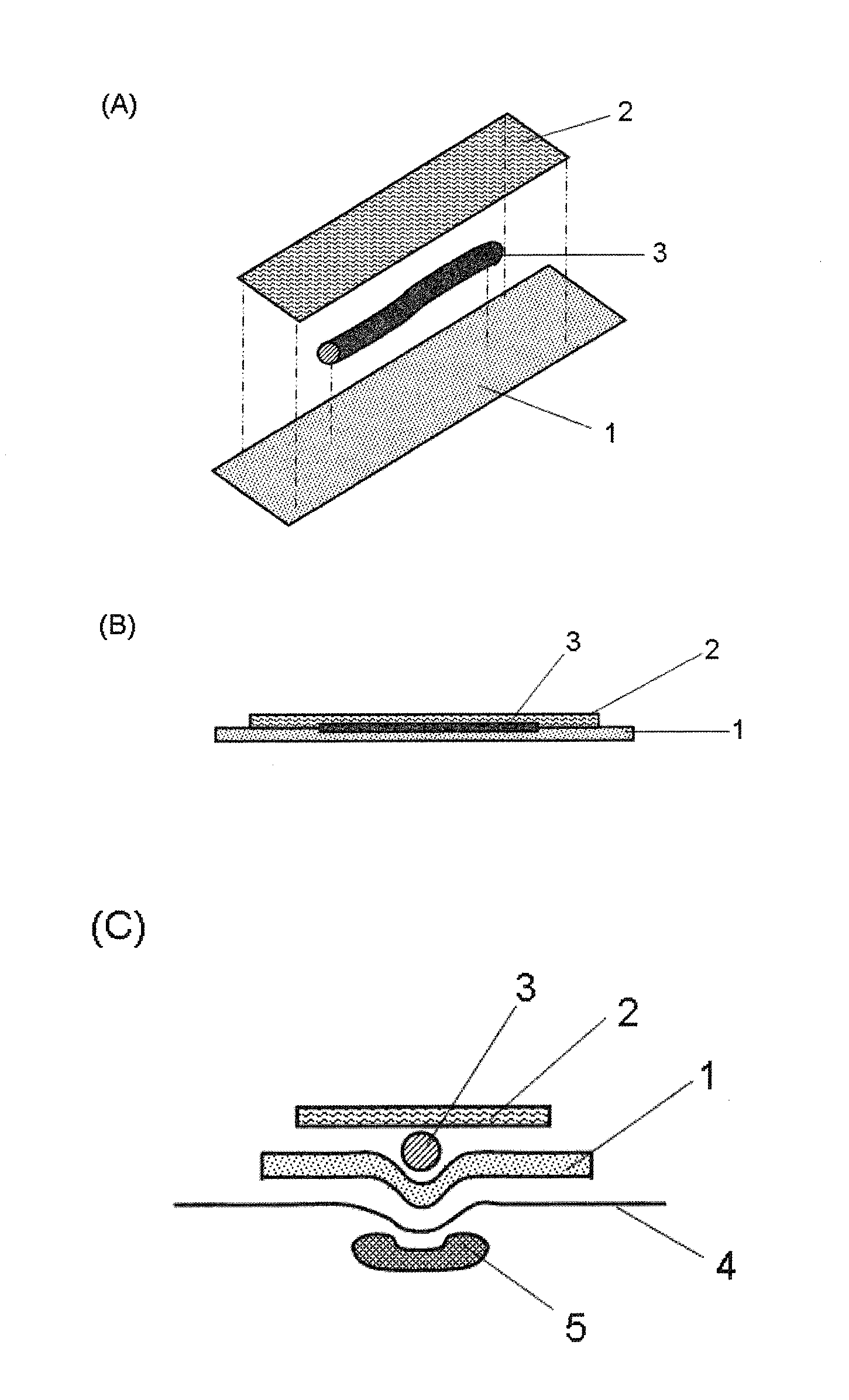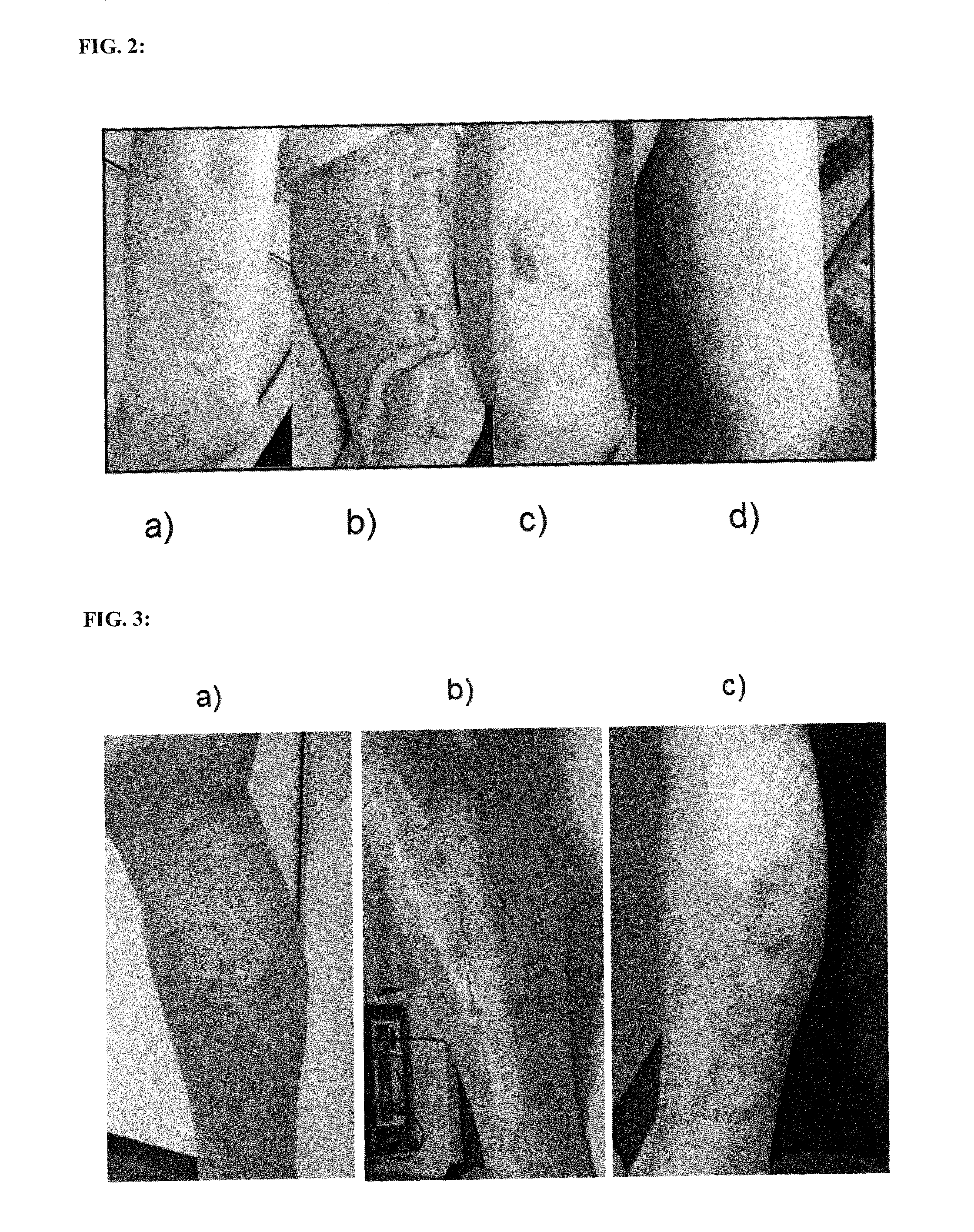Adhesive patch or bandage for use in treating blood vessel diseases
- Summary
- Abstract
- Description
- Claims
- Application Information
AI Technical Summary
Benefits of technology
Problems solved by technology
Method used
Image
Examples
Embodiment Construction
[0027]The present invention relates to an adhesive bandage sandwich for compressing veins or arteries, comprising the following layers: (i) a first adhesive bandage layer [1], adapted to adhere to human skin and which is substantially see-through, (ii) an elastic body [3] which is form stable and preferably a silicone rubber, wherein the elastic body may have varying shapes depending on the vein or artery to be compressed, (iii) a second adhesive bandage layer [2], adapted to adhere to said first adhesive bandage layer.
[0028]The bandage sandwich should be non-toxic, biocompatible and, preferably, biodegradable, which is particularly true for that side of the first adhesive layer, which is intended to be in contact with the skin. The first adhesive bandage layer can further comprise a superabsorbent polymer which can absorb blood. This layer can also comprise additives, e.g. a haemostatic compound to induce blood clotting or antimicrobial properties to promote wound healing. Preferab...
PUM
 Login to View More
Login to View More Abstract
Description
Claims
Application Information
 Login to View More
Login to View More - R&D
- Intellectual Property
- Life Sciences
- Materials
- Tech Scout
- Unparalleled Data Quality
- Higher Quality Content
- 60% Fewer Hallucinations
Browse by: Latest US Patents, China's latest patents, Technical Efficacy Thesaurus, Application Domain, Technology Topic, Popular Technical Reports.
© 2025 PatSnap. All rights reserved.Legal|Privacy policy|Modern Slavery Act Transparency Statement|Sitemap|About US| Contact US: help@patsnap.com



